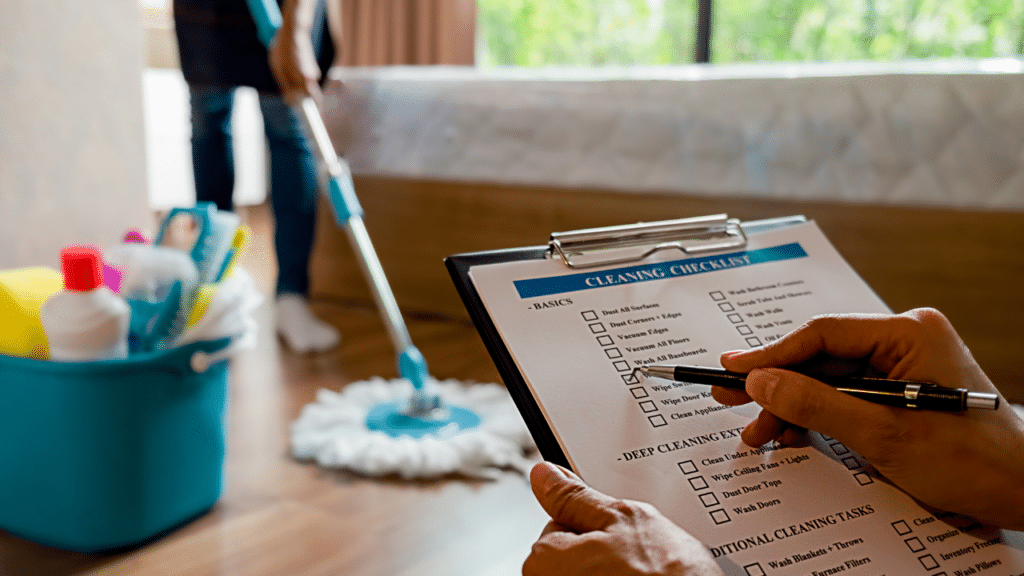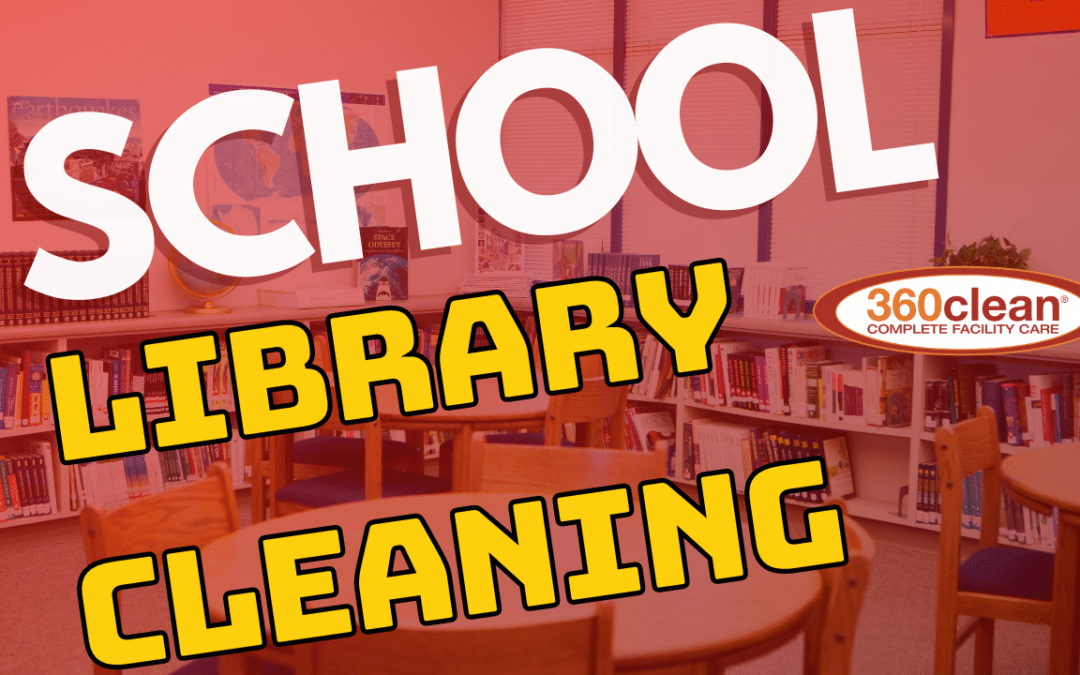There are so many places for dust and germs to accumulate in a library, and books are just one of those places!
Administrators and teachers will want their students and family members to feel comfortable in high traffic areas like a library, especially at times when illness seems to be spreading around a school.
Fortunately, there are a few ways that you can stop dust from accumulating and germs from spreading. To help you get started, read on for your guide on how to clean a school library.
Create a Cleaning Schedule and Checklist
Even if you’re responsible for cleaning the library, it’s best to have a schedule and checklist to keep you on track.
You may think your routine is efficient, but you’d be surprised to know that you may need to increase the frequency of tasks you already complete regularly.

Check your Supplies
For example, you may need to update the cleaning supplies you use. Generally, it’s recommended that you use cleaning solutions approved by the Environmental Protection Agency (EPA).
Make sure that you wear gloves while cleaning to avoid contact with chemicals and to keep bacteria at bay.
Start From the Top
The top of a space – ceilings, fans, corners – often get neglected and gather dust, spiders, and cobwebs. You can eliminate these by using a dry duster or soft cloth to sweep the debris away.
By starting at the top, you’ll save yourself from doing double the work necessary by re-cleaning areas you’ve already gone over.
Dust All Shelves
One of the biggest tasks of keeping a library clean is dusting the shelves where books are housed. Not only does dust contain harmful pathogens, but it leads to poor indoor air quality and can trigger asthma and allergies.
Before you start, remove the books to create a clear working surface. Use a soft cloth and warm water to wipe all shelves, starting at the top.
Depending on the last time the bookcase was cleaned, you may need to dust the top shelves several times to cut through a thick layer of grime.
Clean the Books
While you’ve got the books off the shelves, consider cleaning them. Remove the jackets to clean the hardcover with a soft, dry cloth. Attach the rag to the end of a vacuum hose and remove the dust from all sides of the book.
You may need a slightly damp cloth to remove any filth from the covers. Allow the books to dry completely before replacing their jackets and returning them to their shelves.
Wipe the Tables
Kids are notorious for leaving bits of paper around the library tables and making pencil and pen marks on the surface. Pencil marks can be easily removed using a standard eraser, but pen markings may be tougher.
You can make a solution of warm water and mild detergent and spray it on the table. This should loosen up the ink, making it easy to wipe away. If the soap and water mixture doesn’t do the trick, try rubbing alcohol.
More importantly, make sure you disinfect these surfaces with an approved cleaner to remove harmful bacteria.

Clean the Floors
Keeping the library clean doesn’t end with dusting your shelves and wiping down the books and tables. No room is thoroughly cleaned without running a vacuum or sweeping the floors.
Finish your cleaning routine by vacuuming the entire library. Making this the last step will remove any dust particles from the tables and shelves that made their way to the floors throughout your cleaning process.
Daily Cleaning Tasks
Some things in the library need daily attention, like dusting shelves and straightening books. You may need to focus on other areas more frequently, too.
Some library cleaning tasks can be done a minimum of once each week. This includes vacuuming carpets and dusting shelves throughout the library.
Entrances
Remove any trash and debris from the doorway. Sweep the floors and polish any glass windows in the door.
If there are floor mats at the library entrance, they may be sent out for routine professional cleaning. If not, you may need to vacuum them and inspect them for signs of wear. Dust the window sills and wipe the baseboards.
Tables and Chairs
Place any books or other materials back on the shelves. Empty trash cans and recycling bins. Wipe all tables and chairs with the appropriate solution.
High-Touch Areas
High-touch areas aren’t a new thing. But in recent years, they’ve received more attention as potential threats to your health. Some examples: light fixtures, light switches, surfaces like countertops, and computer keyboards.
These areas must be wiped daily to minimize the risk of transmitting germs between students. You can further prevent the spread of viruses and bacteria by adding disinfection stations throughout the library.
Protect Students with Routine Library Cleaning with 360clean
We hope this guide to library cleaning keeps this learning center looking its best! If you want to keep your library clean and safe year-round, you may want to consider our professional school cleaning services at 360clean.
Because we have a specialized approach to school janitorial services, you can look forward to consistent, high-quality results every time!
Contact us today to receive a free quote for your school!

